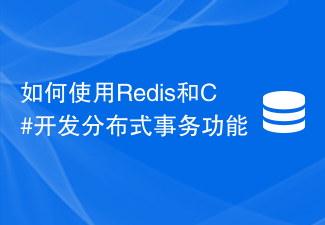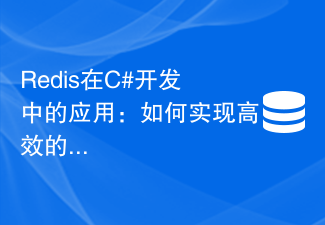In C#, DateTime is a struct. Thus it is of value type and used to represent an instant of time. It is used to represent the date and time of the day. The value of type DateTime ranges between 12:00:00 midnight, January 1, 0001 to 11:59:59 PM, December 31, 9999 A.D.Value of DateTime cannot be null because it is a value type. To initialize a DateTime value, we can call any of the overloads of the DateTime constructor. We can also assign values returned from a property or method to a DateTime object.
Syntax:
Below is the syntax to initialize a new instance of the DateTime structure:
DateTime date_time = new DateTime();
Here, date_time is the user-defined name given to the instance of type DateTime. We have initialized this instance using the ‘new’ operator. In the above syntax, we have used an implicit parameterless constructor to initialize DateTime to its default value. We can also initialize the DateTime instance using any of the overloads of the DateTime constructor.
How Does DateTime Work in C#?
In C#, we can work with DateTime and assign value to a DateTime variable in several ways.
- We can assign value to a DateTime variable by calling any of the overloads of the DateTime constructor, either the parameterless constructor or the constructor with parameters as shown below:
DateTime dateTime = new DateTime(2020, 2, 8, 7, 32, 56);
The above statement initializes a new instance of the DateTime structure for a particular year, month, day, hour, minute, and second.
- Here, we have used the below constructor of the DateTime structure:
public DateTime(int year, int month, int day, int hour, int minute, int second);
- Apart from the one described above, there are ten other constructors available to work with DateTime, which are as follows:
public DateTime(long ticks);
- Here, ‘ticks’ represents a date and time expressed by the number of hundred nanosecond intervals elapsed since January 1 0001 at 00:00:00.000 in the Gregorian calendar.
public DateTime(long ticks, DateTimeKind kind);
- Here, ‘kind’ represents a value among the enumeration values, which represents whether ticks specify a local time, coordinated universal time, or none of the above.
public DateTime(int year, int month, int day);
- In this context, ‘year’ represents a value from 1 to 9999, ‘month’ represents a value from 1 to 12, and ‘day’ represents a value within the range of days in a specific month.
public DateTime(int year, int month, int day, Calendar calendar);
- Here, ‘calendar’ represents a calendar used to interpret year, month, and day.
public DateTime(int year, int month, int day, int hour, int minute, int second, DateTimeKind kind);
public DateTime(int year, int month, int day, int hour, int minute, int second, Calendar calendar);
public DateTime(int year, int month, int day, int hour, int minute, int second, int millisecond);
- Here, ‘millisecond’ represents the milliseconds from 0 to 999.
public DateTime(int year, int month, int day, int hour, int minute, int second, int millisecond, DateTimeKind kind);
public DateTime(int year, int month, int day, int hour, int minute, int second, int millisecond, Calendar calendar);
public DateTime(int year, int month, int day, int hour, int minute, int second, int millisecond, Calendar calendar, DateTimeKind kind);
- We can assign a DateTime variable the DateTime value returned from a property or method as shown below:
DateTime dateTime = DateTime.Now;
This assigns the current date and time to the DateTime variable.
- We can parse a DateTime value from its string representation and can assign it to a DateTime variable, as shown below:
string str = "6/2/2020 9:20:40 AM"; DateTime dateTime = DateTime.Parse(str, System.Globalization.CultureInfo.InvariantCulture);
We can perform the above conversion using Parse(), ParseExact(), TryParse(), and TryParseExact() methods.
Examples of DateTime in C#
Here are a few examples of how to parse a string to a DateTime object:
Example #1
Example showing current date and time with tomorrow’s date and time using property and method provided by DateTime:
Code:
using System;
using System.IO;
namespace ConsoleApp4
{
class Program
{
public static DateTime GetNextDay()
{
//getting next day using AddDays() method
return DateTime.Now.AddDays(1);
}
public static void Main()
{
//displaying current date and time using 'Now' property of DateTime
Console.WriteLine("Current date and time: {0}", DateTime.Now);
DateTime dateTime = GetNextDay();
Console.WriteLine("Tomorrow date and time: {0}", dateTime);
Console.ReadLine();
}
}
}
Output:

Example #2
For example, taking the year as input from the user and then checking if it is a leap year or not using DateTime.IsLeapYear() method.
Code:
using System;
using System.IO;
namespace ConsoleApp4
{
class Program
{
public static void Main()
{
try
{
//taking year as input from user
Console.WriteLine("Please enter a year");
int year = Convert.ToInt32(Console.ReadLine());
//checking if entered year is a leap year or not
//using DateTime.IsLeapYear() method
Console.WriteLine("\n Using IsLeapYear() method:");
if (DateTime.IsLeapYear(year))
{
Console.WriteLine(year + " is a leap year");
}
else
{
Console.WriteLine(year + " is not a leap year");
}
//checking if entered year is a leap year or not
//using DateTime.DaysInMonth() method
Console.WriteLine("\n Using DaysInMonth() method:");
if (DateTime.DaysInMonth(year, 2) == 29)
{
Console.WriteLine(year + " is a leap year");
}
else
{
Console.WriteLine(year + " is not a leap year");
}
}
catch(Exception ex)
{
Console.WriteLine(ex.Message);
}
Console.ReadLine();
}
}
}
Output:

Example #3
For example, we are getting the first and the last day of the year.
Code:
using System;
using System.IO;
namespace ConsoleApp4
{
class Program
{
public static void Main()
{
DateTime dateTime = DateTime.Now;
//displaying first day of current year
DateTime firstDay = new DateTime(dateTime.Year, 1, 1);
Console.WriteLine("First day of {0} is {1}", dateTime.Year, firstDay);
//getting first day of next year
DateTime dateTimeNext = new DateTime(dateTime.Year + 1, 1, 1);
//subtracting one day from the first day of next year
//to get the last day of current year
DateTime lastday = dateTimeNext.AddDays(-1);
Console.WriteLine("Last day of {0} is {1}", dateTime.Year, lastday);
Console.ReadLine();
}
}
}
Output:

Conclusion
The dateTime structure is used to work with date and time. It is used as a data type to store date and time. DateTime provides properties and methods to work with date and time. DateTime is a structure and of a value type; it cannot be null.
The above is the detailed content of DateTime in C#. For more information, please follow other related articles on the PHP Chinese website!
 如何使用C#编写时间序列预测算法Sep 19, 2023 pm 02:33 PM
如何使用C#编写时间序列预测算法Sep 19, 2023 pm 02:33 PM如何使用C#编写时间序列预测算法时间序列预测是一种通过分析过去的数据来预测未来数据趋势的方法。它在很多领域,如金融、销售和天气预报中有广泛的应用。在本文中,我们将介绍如何使用C#编写时间序列预测算法,并附上具体的代码示例。数据准备在进行时间序列预测之前,首先需要准备好数据。一般来说,时间序列数据应该具有足够的长度,并且是按照时间顺序排列的。你可以从数据库或者
 如何使用Redis和C#开发分布式事务功能Sep 21, 2023 pm 02:55 PM
如何使用Redis和C#开发分布式事务功能Sep 21, 2023 pm 02:55 PM如何使用Redis和C#开发分布式事务功能引言分布式系统的开发中,事务处理是一项非常重要的功能。事务处理能够保证在分布式系统中的一系列操作要么全部成功,要么全部回滚。Redis是一种高性能的键值存储数据库,而C#是一种广泛应用于开发分布式系统的编程语言。本文将介绍如何使用Redis和C#来实现分布式事务功能,并提供具体代码示例。I.Redis事务Redis
 如何实现C#中的人脸识别算法Sep 19, 2023 am 08:57 AM
如何实现C#中的人脸识别算法Sep 19, 2023 am 08:57 AM如何实现C#中的人脸识别算法人脸识别算法是计算机视觉领域中的一个重要研究方向,它可以用于识别和验证人脸,广泛应用于安全监控、人脸支付、人脸解锁等领域。在本文中,我们将介绍如何使用C#来实现人脸识别算法,并提供具体的代码示例。实现人脸识别算法的第一步是获取图像数据。在C#中,我们可以使用EmguCV库(OpenCV的C#封装)来处理图像。首先,我们需要在项目
 如何使用C#编写动态规划算法Sep 20, 2023 pm 04:03 PM
如何使用C#编写动态规划算法Sep 20, 2023 pm 04:03 PM如何使用C#编写动态规划算法摘要:动态规划是求解最优化问题的一种常用算法,适用于多种场景。本文将介绍如何使用C#编写动态规划算法,并提供具体的代码示例。一、什么是动态规划算法动态规划(DynamicProgramming,简称DP)是一种用来求解具有重叠子问题和最优子结构性质的问题的算法思想。动态规划将问题分解成若干个子问题来求解,通过记录每个子问题的解,
 Redis在C#开发中的应用:如何实现高效的缓存更新Jul 30, 2023 am 09:46 AM
Redis在C#开发中的应用:如何实现高效的缓存更新Jul 30, 2023 am 09:46 AMRedis在C#开发中的应用:如何实现高效的缓存更新引言:在Web开发中,缓存是提高系统性能的常用手段之一。而Redis作为一款高性能的Key-Value存储系统,能够提供快速的缓存操作,为我们的应用带来了不少便利。本文将介绍如何在C#开发中使用Redis,实现高效的缓存更新。Redis的安装与配置在开始之前,我们需要先安装Redis并进行相应的配置。你可以
 如何实现C#中的图像压缩算法Sep 19, 2023 pm 02:12 PM
如何实现C#中的图像压缩算法Sep 19, 2023 pm 02:12 PM如何实现C#中的图像压缩算法摘要:图像压缩是图像处理领域中的一个重要研究方向,本文将介绍在C#中实现图像压缩的算法,并给出相应的代码示例。引言:随着数字图像的广泛应用,图像压缩成为了图像处理中的重要环节。压缩能够减小存储空间和传输带宽,并能提高图像处理的效率。在C#语言中,我们可以通过使用各种图像压缩算法来实现对图像的压缩。本文将介绍两种常见的图像压缩算法:
 C#开发中如何处理跨域请求和安全性问题Oct 08, 2023 pm 09:21 PM
C#开发中如何处理跨域请求和安全性问题Oct 08, 2023 pm 09:21 PMC#开发中如何处理跨域请求和安全性问题在现代的网络应用开发中,跨域请求和安全性问题是开发人员经常面临的挑战。为了提供更好的用户体验和功能,应用程序经常需要与其他域或服务器进行交互。然而,浏览器的同源策略导致了这些跨域请求被阻止,因此需要采取一些措施来处理跨域请求。同时,为了保证数据的安全性,开发人员还需要考虑一些安全性问题。本文将探讨C#开发中如何处理跨域请
 如何实现C#中的遗传算法Sep 19, 2023 pm 01:07 PM
如何实现C#中的遗传算法Sep 19, 2023 pm 01:07 PM如何在C#中实现遗传算法引言:遗传算法是一种模拟自然选择和基因遗传机制的优化算法,其主要思想是通过模拟生物进化的过程来搜索最优解。在计算机科学领域,遗传算法被广泛应用于优化问题的解决,例如机器学习、参数优化、组合优化等。本文将介绍如何在C#中实现遗传算法,并提供具体的代码示例。一、遗传算法的基本原理遗传算法通过使用编码表示解空间中的候选解,并利用选择、交叉和


Hot AI Tools

Undresser.AI Undress
AI-powered app for creating realistic nude photos

AI Clothes Remover
Online AI tool for removing clothes from photos.

Undress AI Tool
Undress images for free

Clothoff.io
AI clothes remover

AI Hentai Generator
Generate AI Hentai for free.

Hot Article

Hot Tools

Dreamweaver Mac version
Visual web development tools

SublimeText3 Linux new version
SublimeText3 Linux latest version

SublimeText3 Chinese version
Chinese version, very easy to use

SublimeText3 English version
Recommended: Win version, supports code prompts!

ZendStudio 13.5.1 Mac
Powerful PHP integrated development environment







